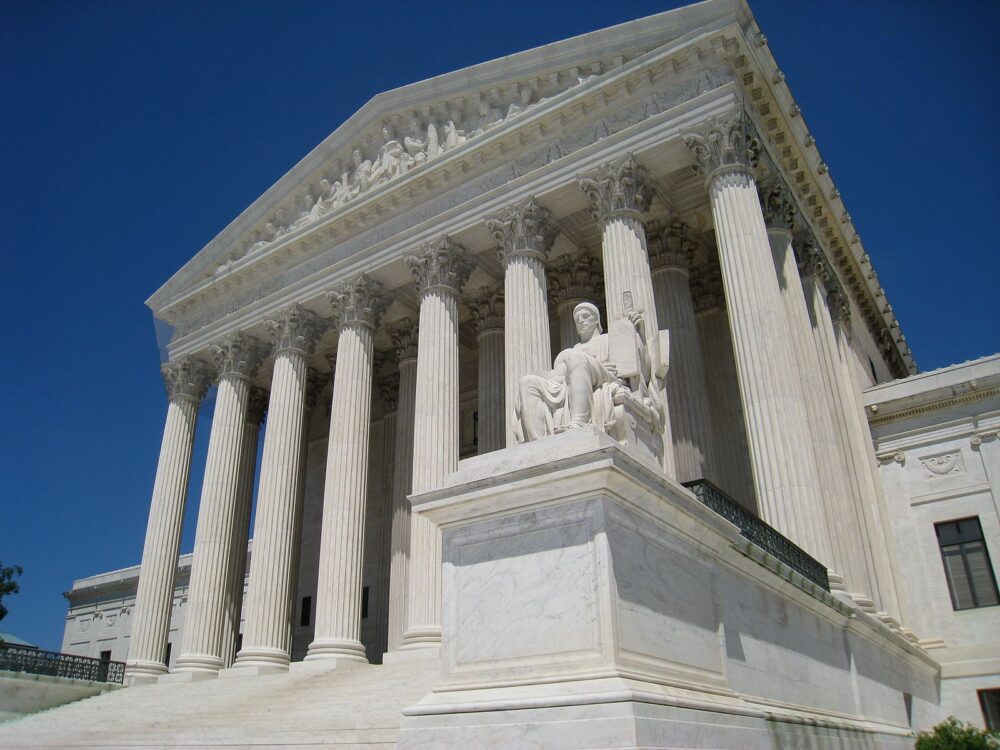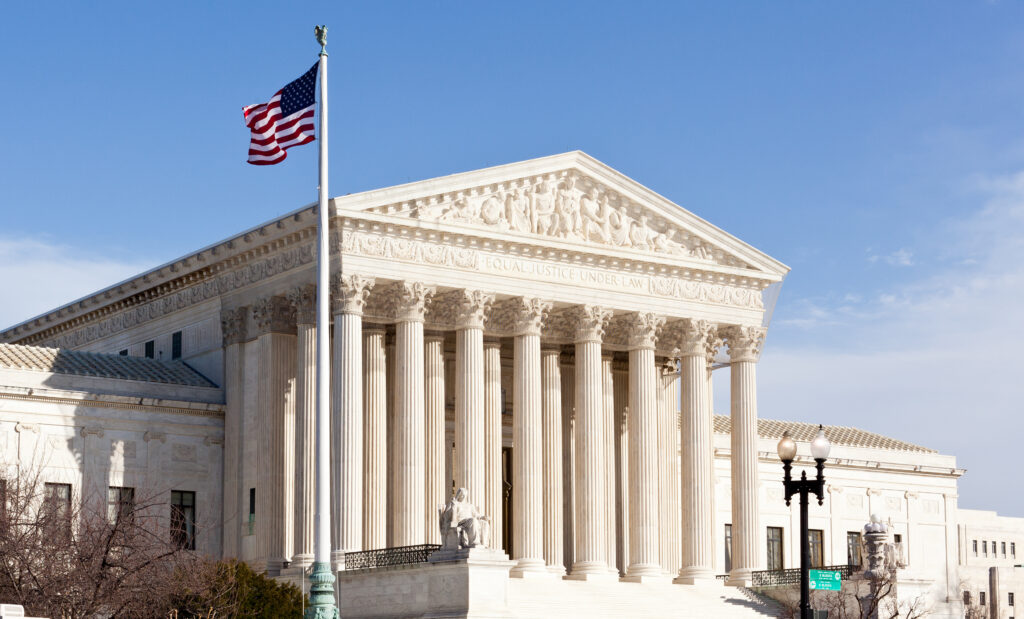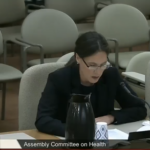Abortion Jurisprudence Primer

This is Issue 70 of the On Point Series.
During its upcoming term, the Supreme Court will review the Mississippi Gestational Age Act, which forbids abortions after 15 weeks’ gestational age, except in cases of medical emergencies or severe fetal abnormalities.[1] This case, known as Dobbs v. Jackson Women’s Health Organization, presents a direct challenge to the Supreme Court’s governing precedent under Roe v. Wade and Planned Parenthood v. Casey which hold that States may not ban pre-viability abortions.
This primer is meant to provide an overview of the leading Supreme Court cases respecting abortion to provide legal context and background for Dobbs. The most important features to understand about American abortion law are the following: (1) the nature of the judicially created right, (2) the standard of review used by courts to determine the constitutionality of abortion legislation, (3) the role of viability, and (4) the factors used by the Supreme Court to uphold precedent (known as the doctrine of stare decisis).
Roe v. Wade[2] is the landmark case in which the Supreme Court held that the “right of privacy”[3] was “broad enough to encompass a woman’s decision whether or not to terminate her pregnancy.”[4] In reaching this conclusion, the Court warned that the “detriment that the State would impose upon the pregnant woman by denying this choice altogether is apparent,” referring to medical risks of pregnancy and various hardships associated with parenting an “unwanted” child or the stigma of “unwed motherhood.”[5]
Describing the right to terminate a pregnancy as akin to a “fundamental” right, the Court determined that challenges to abortion laws must be analyzed under the highest level of judicial review, known as “strict scrutiny.”[6] Under strict scrutiny, for a law regulating abortion to pass constitutional muster, the state must demonstrate that it has a “compelling state interest” and that the law in question is “narrowly drawn to express only the legitimate state interests at stake.”[7] In contrast to strict scrutiny, ordinary legislation that does not implicate a fundamental right is examined under the “rational basis” test, under which a law need only be “rationally related” to a “legitimate” government interest.
The Roe Court noted, however, that the abortion right is not unqualified and must be considered against “important state interests,”[8] which “grow as the woman approaches term.”[9] Therefore, the Court established the trimester rubric according to which the state’s interests, under the strict scrutiny test, would be given more weight as the pregnancy progressed. According to the trimester framework, during the first trimester, the state had no interest important enough to justify any interference with the right to abortion. During the second trimester, the state was permitted to regulate abortion, but only in the interests of the woman’s health.[10] And finally in the third trimester (or post-viability), the state could regulate and even ban abortion because of the state’s interest in the “potentiality of human life” but such legislation must include exceptions for the woman’s life or health.[11] In Doe v. Bolton, a case decided at the same time as Roe, the Court held that the determination of health may be made by the physician “in the light of all factors—physical, emotional, psychological, familial, and the woman’s age—relevant to the wellbeing of the patient. All these factors may relate to health.”[12] This broad and indeterminate interpretation of health for purposes of legislative exceptions is the basis for the fact that, despite efforts to restrict abortion, the reality is that it is permitted in this country in nearly all circumstances up until the moment of birth.
In Roe, the Court did not deem it necessary to resolve the question of when human life begins, describing the “wide divergence of thinking on this most sensitive and difficult question.”[13] Further, it stated that “person” as used in the 14th Amendment’s protection of life does not apply to unborn children.[14]
In the two decades following Roe, the Court struck down most state abortion restrictions under the strict standard it had adopted and the limited interests the state was permitted to advance.[15] Because maternal health was not a permissible state interest until the second trimester, courts invalidated first-trimester clinic regulations, with a chilling effect on protecting women’s health.[16] Courts also banned enforcement of laws that have broad support among most Americans, such as parental and informed consent requirements and 24-hour waiting periods. A notable exception was the consistent ruling that the right to abortion did not carry with it an affirmative public funding obligation.[17]
By 1992, however, many believed, due to its changed composition,[18] the Court was poised to reverse Roe. Notwithstanding these expectations, in Planned Parenthood v. Casey,[19] the Court affirmed the “essential holding of Roe,” i.e., the constitutional right to abortion. In affirming this, the Court attempted to give a firmer textual grounding than the privacy rationale of Roe by situating abortion within its liberty jurisprudence.[20] In so doing, the Court penned the now famous “mystery of life” clause: “at the heart of liberty is the right to define one’s own concept of existence, of meaning, of the universe, and of the mystery of human life. Beliefs about these matters could not define the attributes of personhood were they formed under compulsion of the State.”[21]
In Casey, the Court stated that this understanding of liberty, combined with the force of stare decisis, justified its affirmation of Roe. Stare decisis is the doctrine by which courts follow prior precedent, promoting stability, predictability, and fairness in the law. In deciding whether to overrule prior precedent, courts will consider whether the decision has become unworkable, whether removing it would cause damage to those who have relied on it, or whether its premises have changed such that its central holding is unjustifiable.[22] Taking each argument in turn, the Court stated that, despite opposition and frequent litigation, Roe had not proven unworkable because such cases “fall within judicial competence.”[23] Next, the Court concluded that people had relied on the availability of abortion in the event that contraception should fail. Moreover, the Court concluded that women in particular relied on abortion to participate equally in society, stating that “for two decades of economic and social developments, people have organized intimate relationships and made choices that define their views of themselves and their places in society, in reliance on the availability of abortion in the event that contraception should fail. The ability of women to participate equally in the economic and social life of the Nation has been facilitated by their ability to control their reproductive lives.”[24] Finally, the Court determined that, despite advances in neonatal care which had advanced viability to an earlier point, such factual changes did not weaken the doctrinal footings of Roe.[25] That doctrinal point is that viability “marks the earliest point at which the State’s interest in fetal life is constitutionally adequate to justify a legislative ban on nontherapeutic abortions.”[26] The Court did not address whether these advances in neonatal care, or even in embryology, might cause it to revisit its refusal in Roe to address when human life begins, nor did it revisit the personhood argument.
Finally, the Court asserted that its own institutional legitimacy depended upon reaffirming Roe and that only “the most convincing justification” could preclude the impression that the Court had succumbed to political pressure.[27] Despite the fact that decades after Roe the nation remained bitterly divided over abortion, the Court urged Americans to accept the finality of its decision: “the Court’s interpretation of the Constitution calls the contending sides of a national controversy to end their national division by accepting a common mandate rooted in the Constitution.”[28]
The Court emphasized that a “woman’s right to terminate her pregnancy before viability is the most central principle of Roe v. Wade. It is a rule of law and a component of liberty we cannot renounce.”[29] Despite affirming the constitutional right to abortion, however, Casey did make changes to the Roe standard of review that gave states more latitude to regulate abortion. Describing the right as a protected “liberty interest” (rather than as a fundamental right), the Court moved away from the strict scrutiny standard which it said had “led to the striking down of some…regulations which in no real sense deprived women of the ultimate decision.”[30] The Court also expressed concern that, under Roe, the State’s legitimate interests during the early stages of pregnancy had been given too little, if any, weight.
In place of the strict scrutiny standard, the Court created the “undue burden” standard, under which a law would be unconstitutional if its “purpose or effect is to place a substantial obstacle in the path of a woman seeking an abortion of a nonviable fetus.”[31] Describing the prior trimester framework as “elaborate” and “rigid,” the Court replaced it with viability, i.e., the “time at which there is a realistic possibility of maintaining and nourishing a life outside the woman, so that the independent existence of the second life can, in reason and all fairness, be the object of state protection that now overrides the rights of the woman.”[32] Under this new rubric, the Court said that pre-viability, a state may not create an undue burden on a woman’s right to abortion. Unlike the previous strict scrutiny standard, states could enact structural mechanisms by which the state expresses profound respect for unborn life and measures designed to prefer childbirth over abortion, to ensure choice is informed, and to advance interest in potential life.[33] Post-viability, states could continue to regulate and even ban abortion so long as limits include exceptions for the life or health of the mother.[34] Doe’s broad definition of health, inclusive of physical, emotional, psychological, and familial factors, and the woman’s age, was left unchanged allowing states to continue to permit expansive abortion access based on the health exception.
In the decades following Casey, the Court never again squarely addressed the right to abortion itself but rather only considered cases applying the “undue burden” test to specific restrictions or regulations.[35] Recent cases have also raised questions about the proper interpretation and operation of the undue burden test.[36]
This summary brings us to the upcoming case in Dobbs which presents the following question for the Court’s review: “Whether all pre-viability prohibitions on elective abortions are unconstitutional.”[37] Based on the foregoing summary of governing abortion law, under which abortion is a protected liberty interest and states may not prohibit it or even place an “undue burden” on it before viability, it is apparent that Dobbs presents a direct challenge to that jurisprudence. The case may be the occasion for the Court to revisit the continued role of viability, the applicable standard of review, and even its adherence to the judicially created right of abortion in the first instance.
In urging the Court to uphold the Gestational Age Act, the State of Mississippi challenges the constitutional legitimacy of the right to abortion, the appropriateness of the heightened standard of review, the continued role of viability, and whether stare decisis justifies adherence to these doctrines.[38] First, Mississippi argues that “the conclusion that abortion is a constitutional right has no basis in text, structure, history, or tradition.”[39] Therefore, it argues that abortion restrictions need only satisfy the rational basis standard. Further, Mississippi argues that stare decisis does not justify upholding the regime of Roe/Casey because they are “grievously wrong, unworkable, damaging and outmoded.”[40] And, contra Casey, it argues that “[r]eliance interests do not support retaining them.”[41] Finally, Mississippi argues that, at a minimum, even if the Court retains the right to abortion and heightened scrutiny, it should reject use of viability as a barrier to prohibiting elective abortions. In particular, Mississippi points to the fact that a viability rule impedes states in their efforts to protect women’s health, unborn life, and the ethical practice of medicine.[42] Otherwise, “[n]o matter what a State learns—about fetal pain, about women’s health, about what effect performing abortions has on doctors—the State cannot fully act on that knowledge before viability.”[43]
In response, Jackson Women’s Health Organization asserts that the Court should reject the invitation to “jettison a half-century of settled precedent,” arguing that the viability line of Roe/Casey struck a careful balance and that the woman’s interests before viability must be “categorically stronger” than any state interest.[44] Arguing that most of Mississippi’s arguments were made, and rejected, at the time of Casey, the appellee states that “absent the most dramatic and unexpected changes in law and fact,” the Court should not abandon its precedent.
The Supreme Court’s creation of a constitutional right to abortion and its self-appointed role as final arbiter of abortion policy has stifled the democratic process and inflamed, rather than reconciled, the bitter national division about this most fundamental of moral questions. The unworkable undue burden test and measure of viability have constrained legislatures from being responsive to advances in medicine, to the pressing needs of women and families, to biological realities about the unborn person, and to the complex interests and concerns of their constituencies. In Dobbs, the Supreme Court has an opportunity to restore sanity to the national abortion debate by returning authority to legislative bodies where consensus can be built based on the citizenry they represent.
Elizabeth R. Kirk, J.D. is an associate scholar of the Charlotte Lozier Institute.
[1] Miss. Code. Ann. 41-41-191.
[2] Roe v. Wade, 410 U.S. 113 (1973).
[3] Although the word “privacy” is not in the text of the United States Constitution, as long ago as the 1920s, the Supreme Court began to recognize constitutional protection for a “private realm of family life.” Prince v. Massachusetts, 321 U.S. 158, 166 (1944). See, e.g., Meyer v. Nebraska, 262 U.S. 390, 399 (1923) (finding that the 14th Amendment’s protection of liberty extends to “the right of the individual to contract, to engage in any of the common occupations of life, to acquire useful knowledge, to marry, establish a home and bring up children, to worship God according to the dictates of his own conscience, and generally to enjoy those privileges long recognized at common law as essential to the orderly pursuit of happiness by free men”); Pierce v. Society of Sisters, 268 U.S. 510 (1925) (finding that the “parental right to guide one’s child intellectually and religiously is a most substantial part of the liberty and freedom of the parent.”)
[4] 410 U.S. at 153.
[5] Id.
[6] Id. at 155-56. For more details on the importance of the standard of review in abortion law, see Elizabeth R. Kirk, “Impact of the Strict Scrutiny Standard of Judicial Review on Abortion Legislation Under the Kansas Supreme Court’s Decision in Hodes & Nauser v. Schmidt,” Charlotte Lozier Institute On Point Series 42 (March 2020).
[7] Id. at 155.
[8] Id. at 154.
[9] Id. at 162-63.
[10] Id. at 183.
[11] Doe v. Bolton, 410 U.S. 179 (1973).
[12] Decided at the same time as Roe, and intended to be read together with it, was Doe v. Bolton, 410 U.S. 179 (1973) at 212.
[13] 410 U.S. at 160.
[14] Id. at 158. Compare John Finnis, Abortion is Unconstitutional, First Things (April 2011).
[15] See, e.g., Planned Parenthood v. Danforth, 428 U.S. 52 (1976) (invaliding a parental consent requirement); City of Akron v. Akron Ctr. for Reprod. Health, 462 U.S. 416 (1983) (striking Ohio 24-hour waiting period, parental consent requirement, and informed consent requirement); Thornburgh v. Am. Coll. Of Obstetricians & Gynecologists, 476 U.S. 747 (1986) (striking informed consent law).
[16] See Clarke D. Forsythe & Bradley N. Kehr, A Road Map Through the Supreme Court’s Back Alley, 57 Vill. L. Rev. 45 (2012) (listing courts which invalidated first-trimester clinic regulations in the wake of Roe).
[17] See Maher v. Roe, 432 U.S. 464 (1977) (upheld Connecticut law which prohibited the use of Medicaid funds for non-therapeutic abortions and ruled that states are not required to show a compelling interest for their policy preference of childbirth to abortion); Harris v. McRae, 448 U.S. 297 (1980) (upholding the Hyde Amendment, which prohibits the use of federal Medicaid funds to reimburse states the cost of abortions under the program, and holding that the federal right to abortion carries with it no affirmative funding obligation); Webster v. Reprod. Health Servs., 492 U.S. 490 (1989) (upheld a Missouri law which prohibited the use of public employees or facilities to perform abortions and prohibited the use of public funds, employees, or facilities for the purpose of encouraging a woman to have an abortion); Rust v. Sullivan, 500 U.S. 173 (1991) (upheld federal regulations prohibiting family planning clinics receiving Title X funding from abortion counseling or referrals).
[18] In 1992, there were only three remaining justices from Roe. Justice Blackmun, the author of Roe, remained, as did Justices Rehnquist and White, who had dissented. The additional six justices (Kennedy, O’Connor, Scalia, Souter, Stevens, and Thomas) were all Republican appointees.
[19] Planned Parenthood v. Casey, 505 U.S. 833 (1992).
[20] In Roe, the Court situated the right of a woman to terminate her pregnancy within this right to privacy, “founded in the Fourteenth Amendment’s concept of personal liberty and restrictions upon state action.” 410 U.S. at 153. Casey was more explicit in grounding it in liberty. More recently, jurists have sought to locate the right in equal protection jurisprudence. See, e.g., Carhart v. Gonzales, 550 U.S. 124 (2007) (Ginsburg, J. dissenting) (asserting that “legal challenges to undue restrictions on abortion procedures do not seek to vindicate some generalized notion of privacy; rather, they center on a woman’s autonomy to determine her life’s course, and thus to enjoy equal citizenship stature.”) Compare Erika Bachiochi, Embodied Equality: Debunking Equal Protection Arguments for Abortion Rights, Harvard J.L. Pub. Pol’y (2011). Since Roe, the Court’s articulation of the proper textual grounding of the abortion right—whether privacy, liberty, or equality—has shifted, but it has never abandoned the right itself.
[21] 505 U.S. at 851. Additionally, the Court described the woman’s liberty as “in a sense unique to the human condition and so unique to the law. The mother who carries a child to full term is subject to anxieties, to physical constraints, to pain that only she must bear. That these sacrifices have from the beginning of the human race been endured by woman with a pride that ennobles her in the eyes of others and gives to the infant a bond of love cannot alone be grounds for the State to insist she make the sacrifice. Her suffering is too intimate and personal for the State to insist, without more, upon its own vision of the woman’s role, however dominant that vision has been in the course of our history and our culture. The destiny of the woman must be shaped to a large extent on her own conception of her spiritual imperatives and her place in society.” Id. at 852.
[22] Id. at 855.
[23] Id.
[24] Id. at 856.
[25] Id. at 859.
[26] Id. at 860.
[27] Id. at 867.
[28] Id. at 867.
[29] Id. at 871.
[30] Id. at 875.
[31] Id. at 877.
[32] Id. at 870.
[33] Id. at 877-78.
[34] Id. at 879.
[35] See, e.g., Stenberg v. Carhart, 530 U.S. 914 (2000) (Court held that nearly 30 state partial-birth abortion bans were unconstitutional because they were too “vague” and because they contained no “health” exception and therefore constituted an “undue burden” on abortion); Carhart v. Gonzales, 550 U.S. 124 (2007)(Court upheld the federal partial-birth abortion ban, rejecting a vagueness challenge because the Act adequately described the prohibited conduct and concluding that the absence of the health exception did not constitute an undue burden, because the evidence demonstrated there were no concrete examples of conditions that would warrant a partial-birth abortion and that there were safe alternatives to the proscribed procedure).
[36] Two recent cases created confusion about the undue burden test. In Whole Woman’s Health v. Hellerstedt, 579 U.S. __ (2016), the Court reviewed a Texas statute which required abortion providers to have admitting privileges at a nearby hospital to meet certain safety standards and held that the provisions in question created an undue burden for women seeking an abortion, without providing sufficient health benefits. This weighing of burden and benefits caused Justice Thomas, in his dissent, to state that the majority “reimagines the undue-burden standard” for abortion access, creating a “benefits-and-burdens balancing test” and that courts should instead defer to the legislatures to weigh such matters. Four years later, in June Medical Services v. Russo, 591 U.S. __, 140 S.Ct. 2103 (2020), the Court addressed a similar Louisiana law which required abortionists to maintain admitting privileges at a nearby hospital. Despite the factual similarities to the Texas law and the Supreme Court’s ruling in Hellerstedt, the Fifth Circuit had upheld the law stating that the record demonstrated the impact (undue burden) on women seeking abortions was not substantial. On appeal to the Supreme Court, Justice Breyer delivered a plurality opinion, striking the law under an application of Hellerstedt. Justice Roberts concurred in the judgment. Even though he had dissented in Hellerstedt, he concurred based on the doctrine of stare decisis, which he stated applied absent “special circumstances.” 140 S.Ct. at 2134. He wrote separately to make the special point that the balancing-test approach is not the governing test, but rather the “undue burden” test of Casey. While normally the rule of precedential value is that the opinion that supplies the determining vote on the narrowest grounds—in this case Justice Robert’s opinion—is the controlling opinion, the circuit courts of appeals are split on which articulation of the “undue burden” test governs. See Mary E. Harned, “Abortion Cases in the Higher Federal Courts: Clarification Needed After June Medical,” Charlotte Lozier Institute On Point Series 58 (April 2021).
[37] Dobbs v. Jackson Women’s Health Org., 209 L.Ed.2d 748 (2021).
[38] The State of Mississippi’s merits brief may be found at https://www.supremecourt.gov/DocketPDF/19/19-1392/184703/20210722161332385_19-1392BriefForPetitioners.pdf (cited hereafter as “Petitioner’s Brief”). Additionally, over 75 amicus briefs were filed illuminating various aspects of the issues raised by Dobbs.
[39] Petitioner’s Brief, pp. 1-2.
[40] Id. at 11.
[41] Id.
[42] Id. at 41.
[43] Id. at 42.
[44] The Jackson Women’s Health Organization’s merits brief may be found at https://www.supremecourt.gov/DocketPDF/19/19-1392/192267/20210913143126849_19-1392bs.pdf
























